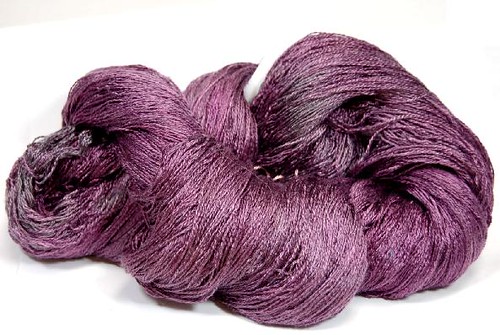Influence of Fiber Fineness and Maturity on spinning Process
Fiber Fineness
Fiber fineness determine how many fibers are present in the cross section of a yarn of given thickness. Additional fibers in the cross section not only provide additional strength but also a better distribution in the yarn. Minimum 30 fibers are needed, usually over 100 fibers are required. Fiber fineness influences spinning limit, drape of the fabric, yarn strength, luster, yarn evenness, handle, yarn fullness and productivity. Productivity is influenced by reduced end breakage rate.
In a conventional spinning process, fine fibers accumulate to the core and coarse fibers in the periphery.
Fiber fineness is measured in dtex which is equal to ratio of mass in dgrams and length in km. Decitex is equal to the product of Micronaire value of the cotton and 0.394.
Cotton fibers are generally classified as very fine if they have a micronaire value upto 3.1; fine if they have value between 3.1 to 3.9; medium if they have it between 4.0 to 4.9; slightly coarse between values of 5 to 5.9 and coarse if they have a micronaire value above 6.
Fiber Maturity
Cotton fiber consists of cell wall and lumen. The maturity index depends upon the thickness of the cell wall. The fibers are considered ripe if they have maturity index between 50-80 percent, unripe if they have MI between 30 to 45% and dead when they have it less than 25%.
Unripe fibers have neither adequate strength nor adequate longitudinal thickness. They lead to loss of yarn strength, neppiness, high proportion of short fibers, varying dyeability, processing difficulties mainly at the card.
Now that you've finished reading this post, what are you going do? You should go join the Forum.

![Reblog this post [with Zemanta]](http://img.zemanta.com/reblog_e.png?x-id=0e355b0e-8af0-4bc8-98a4-da9e74656547)


![Reblog this post [with Zemanta]](http://img.zemanta.com/reblog_e.png?x-id=5b2c253c-2cfb-49c8-a022-36a9a32adebb)


![Reblog this post [with Zemanta]](http://img.zemanta.com/reblog_e.png?x-id=71468940-a783-49c4-a3c1-1e0562682263)

![Reblog this post [with Zemanta]](http://img.zemanta.com/reblog_e.png?x-id=aeac4727-5011-4555-bc6f-3395d61d0169)
![Reblog this post [with Zemanta]](http://img.zemanta.com/reblog_e.png?x-id=f57c1e10-8ea7-4909-bbb6-19011b0fb68c)